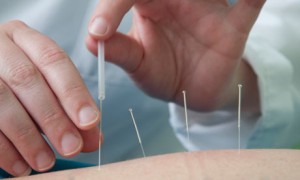Period Pain
When period pain is not caused by an existing medical condition, it is called primary dysmenorrhea. This is most commonly experienced by women under the age of 25. Estimates suggest 45-95% of women will experience dysmenorrhea and 10-15% will suffer from severe symptoms.
 The defining symptom of dysmenorrhea is cramping in the lower abdomen. This usually occurs between 8-72 hours prior to menstruation. The pain will usually peaks during the first few days of menstrual flow (when the bleeding is most heavy). Other associated symptoms include: back and thigh pain, headaches, diarrhea, nausea and vomiting.
The defining symptom of dysmenorrhea is cramping in the lower abdomen. This usually occurs between 8-72 hours prior to menstruation. The pain will usually peaks during the first few days of menstrual flow (when the bleeding is most heavy). Other associated symptoms include: back and thigh pain, headaches, diarrhea, nausea and vomiting.
Dysmenorrhea is caused by tension and contraction in the uterine muscles. In Chinese Medicine theory, it is however said to be caused by either liver qi stagnation, cold accumulation, or qi and blood deficiency.
A clinical trial was conducted to test if acupuncture could effectively treat dysmenorrhea. Subjects who received the acupuncture intervention were divided into two groups relative to the frequency of the pain they experienced. The high frequency group received three treatments during the seven days prior to the start of the menstrual cycle. In contrast, those in the low frequency group received three treatments evenly spaced between menses. Both groups were further divided into two subgroups. Those who received standard acupuncture and those who received electro-acupuncture.
The results encouragingly indicated significant decreases in pain across all subjects. A significant reduction in pain was defined as being a 30% decrease or more. The percentage of women in each group who experienced a significant reduction in pain, was as follows:
- High frequency acupuncture group: 72%
- Low frequency acupuncture group: 69%
- High frequency electro-acupuncture group: 61%
- Low frequency electro-acupuncture group: 47%
Most encouragingly, the pain experienced by all subject one year after the entry into the trail, still remained significantly less.
Armour, M., Dahlen, G., Zhu, X., & Smith, C. (2017). The role of treatment timing and mode of stimulation in the treatment of primary dysmenorrhea with acupuncture: Am exploratory randomized controlled trial. Plos One 12 (7), p.2.




